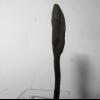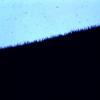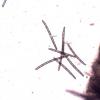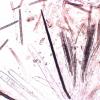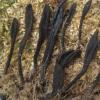
21-12-2025 09:32
Hello.A tiny ascomycete found embedded in wood in

21-12-2025 21:32
Pol DebaenstHello, Garden, Burgweg 19, Veurne, BelgiumOn 10/1

22-12-2025 23:38
Patrice TANCHAUDBonsoir, récolte sur un mur en pierre, apothéci

22-12-2025 00:47
Patrice TANCHAUDBonsoir, récolte à proximité du milieu dunaire

21-12-2025 21:40
Isabelle CharissouBonjour, j'aimerais connaitre les références de

20-12-2025 23:08
Patrice TANCHAUDBonsoir, récolte sur sol sablonneux dans l'arri�
Thanks
Mal

Hi Malcolm,
this should bei Trichoglossum walteri as all spores of the ripe collection seem to be at most 8-celled. I found this repeatedly in different regions in Germany, on acid soil iin meadows and heathland, and once at stream-side in a forest (with Fraxinus) also. The shape is in the range of the species. I show a foto with some carpophores.
Regards from Lothar
Mal
Very difficult question if one reccal the conclusions of the recent paper
Sabino Arauzo and Placido Iglésias, La familia Geoglossaceae ss. str. en la península ibérica y laMacaronesia, Errotari 11, 166-259, 2014;
where the authors claim for an urgent revision of the genus Trichoglossum. They mention specimens usually atributed to other species of Trichoglossum, besides T. hirsutum, that are indistinguishable by DNA from the type species. These include specimens with 7-septate spores. I don't know if this also includes T. walteri, that usually has 7-septate spore (in majority) and is said to differ from other 7-septate species by having spores less than 100 um, that however was not found in the study area. By this reason they include all such species (T. octopartitum, T. variabile, T. velutipes) under the name T. variabile, until the situation be clarified.
Best regards,
zaca

Hi Zaca,
I cannot say if all the taxa you mention are identical or not - at least my collections of T. walteri (approximately 20 - all witih spores (mostly) below 100 µm and with spores never more than 7-septate) seem to be all the same, a well-characterized taxon (and I think Malcolms specimens should belong there). Once I determined a specimen (with doubt) as T. variabile, from a more base-rich habit (together with T. hirsutum) - it was not what I call T. walteri in my opinion.
Regards from Lothar
http://www.pilzkunde.de/index.php/publikationen - first Link 49
Hi all:
in this case the option T. walteri seems correct, the ascospore guttulation is similar to that of Gl. glutinosum or G. fallax.
Zaca, T. octopartitum is a true species, with multiguttulate spores>100. Another question is the group of species with variable septation.
Best regards.
Sabino.

Hi Sabino,
thank you for your statement.
Coincidence: Geoglossum fallax (often) and G. glutinosum (few times) are the only other earth tongues I found in the sites with Trichoglossum walteri.
Regards from Lothar
for clarifying this matter.
Regards,
zaca

Hi Sabino or Zaca,
could I have this, too?
Sabino Arauzo and Placido Iglésias, La familia Geoglossaceae ss. str. en la península ibérica y laMacaronesia, Errotari 11, 166-259, 2014;
Regards from Lothar
Mal
